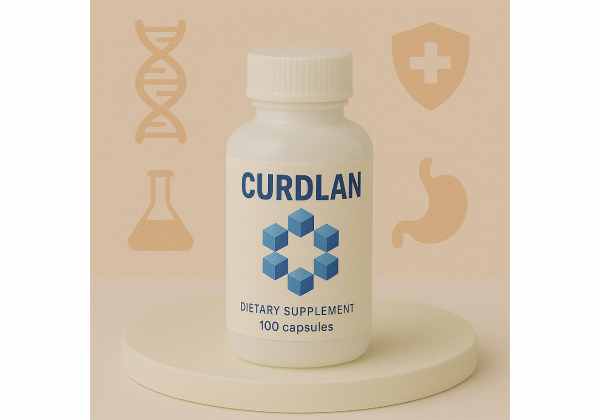Cudweed Supplement: Respiratory Support, Wound Healing, Proper Dosage & Side Effects
Cudweed, a remarkable herb from the Gnaphalium genus, has quietly stood the test of time as a trusted natural remedy across continents. Known for its silvery leaves and small, woolly flowers, cudweed has been cherished in folk medicine for soothing respiratory discomfort, easing inflammation, supporting digestive health, and even aiding wound healing. Modern interest in cudweed supplements is surging...
Culver’s Root Guide: Traditional Uses, Science-Backed Benefits, Dosage & Safety
Culver’s root (Veronicastrum virginicum) stands out as a unique North American herb celebrated for its striking appearance and valued for centuries in both Indigenous and early American herbal traditions. Known for its tall, elegant flower spikes and deep roots, Culver’s root has long been recognized as a gentle but effective digestive aid, liver tonic, and cleansing botanical. Today, health...
Cuminum cyminum Benefits: Proven Effects, Best Ways to Use, Dosage, and Warnings
Cuminum cyminum, widely recognized as cumin, is a cherished spice with a powerful reputation in both culinary and medicinal traditions across the globe. Its distinctive flavor enriches countless dishes, but cumin’s real magic lies in its diverse health-promoting properties. For centuries, cumin seeds have been used in herbal remedies to enhance digestion, boost metabolism, and support immune function. Today,...
Cuphea Seed Oil: Health Benefits, Uses, Dosage, and Side Effects
Cuphea seed oil is gaining momentum as a potent, natural ingredient in the worlds of nutrition, skincare, and functional foods. Extracted from the seeds of Cuphea plants—a diverse genus native to the Americas—this oil stands out for its exceptionally high content of medium-chain fatty acids, especially capric, lauric, and caprylic acids. These unique properties make Cuphea seed oil a...
Cupmoss Supplement: Immune Support, Wound Healing, Antimicrobial Benefits, and Risks
Cupmoss, often referred to in scientific circles as Cladonia species, is a remarkable lichen that thrives in diverse climates, from arctic tundras to temperate forests. Known for its unique cup-shaped structure, cupmoss has been a part of folk medicine for centuries, valued for its antimicrobial, anti-inflammatory, and wound-healing properties. Today, it’s gaining renewed attention as a natural supplement for...
Curcuma aeruginosa Supplement: Health Benefits, Traditional Uses, Dosage, and Safety
Curcuma aeruginosa, also known as black turmeric or “Temu Hitam,” is an exotic member of the ginger family celebrated for its vibrant blue-black rhizome and centuries-old reputation in traditional Asian medicine. Unlike common turmeric, Curcuma aeruginosa contains a unique blend of bioactive compounds, including curcuminoids and essential oils, that are believed to offer a wide spectrum of health benefits—from...
Curcuma amada (Mango Ginger): Top Benefits, Evidence, Dosage, and Risks
Curcuma amada, commonly known as mango ginger, is a fascinating botanical prized in Ayurveda and Asian cuisine for its unique flavor and wellness potential. Though closely related to turmeric and ginger, Curcuma amada stands apart with its aromatic, mango-like scent and a history rich in culinary and medicinal applications. Revered for its gentle digestive, anti-inflammatory, and antioxidant effects, this...
Curcuma longa Supplement: Benefits, Proper Dosage, Side Effects, and More
Curcuma longa, more commonly known as turmeric, is a celebrated botanical in both traditional healing and modern wellness circles. Revered for centuries across Asia, this golden-yellow root delivers a powerhouse of active compounds—primarily curcumin—which give it a distinct color and impressive array of health benefits. Turmeric is widely sought for its potential to ease inflammation, support joint and digestive...
Curcuma phaeocaulis: Science-Backed Uses, Health Properties, and How to Take It
Curcuma phaeocaulis, a lesser-known cousin of the famous turmeric plant, is rapidly gaining attention for its diverse therapeutic uses in traditional and modern wellness. Sourced mainly from Southeast Asia and China, its rhizome is prized in herbal medicine for supporting digestive, liver, and circulatory health. Recent research highlights Curcuma phaeocaulis’s unique phytochemicals—distinct from those found in common turmeric—that contribute...
Curcuma xanthorrhiza Supplement: Best Benefits, Proper Dosage, and Safety Explained
Curcuma xanthorrhiza, known as Javanese turmeric or “temulawak,” is a botanical powerhouse native to Indonesia and Southeast Asia. Valued for centuries in traditional medicine, this distinctive rhizome has recently gained international attention for its robust effects on liver health, digestion, inflammation, and immune function. Rich in xanthorrhizol, curcuminoids, and essential oils, Curcuma xanthorrhiza stands out for its strong antioxidant...
Curcuma zedoaria: Science-Backed Uses, Women’s Health, Dosage, and Side Effects
Curcuma zedoaria, also known as white turmeric or zedoary, is a distinct member of the ginger family prized for its earthy aroma and diverse health benefits. Native to India and Southeast Asia, this root stands apart from common turmeric due to its pale yellow-white flesh, unique taste, and rich history in Ayurvedic and traditional Chinese medicine. Today, Curcuma zedoaria...
Curcumin: Top Uses, Science-Backed Benefits, Dosage Guidelines, and Safety
Curcumin is the golden-yellow bioactive compound found in turmeric root (Curcuma longa), celebrated globally for its potent anti-inflammatory and antioxidant effects. Revered for centuries in Ayurvedic and traditional Asian medicine, curcumin has emerged as one of today’s most researched natural supplements. It supports joint comfort, immune balance, metabolic health, cognitive function, and healthy aging. Unlike regular turmeric powder, standardized...
Curdlan: Prebiotic Fiber, Food Applications, Health Effects, and Dosage Guide
Curdlan is a naturally occurring polysaccharide celebrated for its unique functional and health-promoting properties. Produced by specific bacteria during fermentation, curdlan forms strong gels when heated, making it a prized ingredient in food, biotechnology, and health supplements. It’s valued for its texturizing ability in vegetarian and vegan products, but recent research highlights curdlan’s potential as a dietary fiber, immune...
Cuscuta Seed Extract: Herbal Remedy Benefits, Best Uses, and Dosage Guide
Cuscuta seed extract, derived from the seeds of the parasitic plant commonly known as dodder, has been used in traditional herbal medicine for centuries—especially across Asia—for its unique health benefits. Today, it’s gaining widespread attention as a natural supplement reputed for supporting reproductive health, boosting immunity, and enhancing vitality. With growing scientific interest, Cuscuta seed extract is now being...
Cyanidin: Natural Antioxidant Supplement for Heart, Brain, and Immune Health
Cyanidin is a vibrant, health-promoting plant compound found in many richly colored fruits and vegetables, especially berries. Belonging to the anthocyanin family, cyanidin gives cherries, blackberries, and red cabbage their deep hues while providing a wide array of science-backed health benefits. Recognized for its potent antioxidant activity, cyanidin is being studied for its potential to support heart health, combat...
Cyanocobalamin: Essential Vitamin B12 Benefits, Dosage, Uses, and Side Effects
Cyanocobalamin, a widely used form of vitamin B12, plays a vital role in energy production, brain health, and red blood cell formation. As one of the most important water-soluble B vitamins, cyanocobalamin is essential for nerve function, DNA synthesis, and maintaining healthy homocysteine levels. While it’s found naturally in animal-based foods, many people—especially vegetarians, vegans, and older adults—require supplementation...
Cyanostane: Bodybuilding Supplement Guide, Dosage, and Potential Side Effects
Cyanostane is a synthetic anabolic compound that has gained attention in the world of bodybuilding and athletic performance for its potential to boost muscle growth, increase strength, and enhance physical conditioning. Originally developed as a prohormone, cyanostane is often promoted as a supplement for those seeking dramatic physique changes in a short period. Despite its popularity, cyanostane is not...
Cyclamen: Sinus Health Benefits, Nasal Spray Uses, Dosage, and Safety
Cyclamen, a genus of flowering plants known for their striking beauty, also holds a rich history in herbal medicine and modern natural health. Most commonly, Cyclamen europaeum (also called sowbread) is used for its medicinal properties. Traditionally used across Europe for sinus health and inflammation, cyclamen root extract is now an ingredient in nasal sprays, supplements, and alternative therapies—especially...
Cyclo His Pro: Cognitive Support, Neuroprotective Benefits, Dosage, and Side Effects
Cyclo His Pro is an emerging dietary supplement that combines the dipeptide cyclo (histidyl-proline) with unique physiological properties, garnering attention in both clinical research and the wellness community. Also known as cyclo(His-Pro) or CHP, this compound occurs naturally in mammalian tissues, especially the brain, where it plays a role in cellular protection, anti-inflammatory response, and metabolic regulation. Cyclo His...
Cycloastragenol: Anti-Aging Benefits, Longevity Support, Uses, and Safe Dosage
Cycloastragenol is a highly sought-after compound in the world of anti-aging and longevity supplements. Derived from Astragalus membranaceus, a renowned adaptogenic herb in Traditional Chinese Medicine, cycloastragenol stands out for its ability to support telomere length and promote cellular vitality. This unique saponin is recognized for its powerful antioxidant effects, immune modulation, and potential for slowing the aging process...
Cyclodextrin: Top Benefits, Uses, Dosage, and Side Effects for Supplement Users
Cyclodextrin is emerging as a powerhouse ingredient in the world of health supplements and pharmaceuticals, renowned for its ability to enhance the solubility, absorption, and stability of various compounds. With origins in natural starches, cyclodextrin’s unique molecular structure allows it to trap and transport other molecules, making it a valuable tool for both improving supplement effectiveness and supporting specific...
Cyperus rotundus Root: Best Uses, Health Benefits, Dosage, and Side Effects
Cyperus rotundus, also known as nutgrass or purple nutsedge, is a traditional medicinal plant with a history that stretches across continents and centuries. Renowned in Ayurveda, Traditional Chinese Medicine, and global herbal traditions, this resilient root offers a wide spectrum of health benefits—from digestive support and anti-inflammatory effects to cognitive wellness and hormone balance. In recent years, modern research...
Cypress Oil: Top Benefits, Uses, Proper Dosage, and Side Effects
Cypress oil, distilled from the needles and twigs of the cypress tree (Cupressus sempervirens), has captivated herbalists and aromatherapists for centuries. Renowned for its crisp, woody scent and powerful therapeutic properties, cypress essential oil is used to promote relaxation, support respiratory health, enhance circulation, and soothe muscle tension. Today, its applications extend from skincare to emotional wellness, making it...
Cypress Spurge in Herbalism: Properties, Toxicity, and Cautionary Benefits
Cypress spurge (Euphorbia cyparissias) is an eye-catching perennial plant with a long history of use in folk medicine and traditional herbalism, particularly across Europe. Recognizable by its slender, pine-like foliage and vibrant yellow-green flowers, cypress spurge has intrigued both herbalists and botanists for centuries. While often regarded as an invasive garden weed, it also holds a unique place in...



























